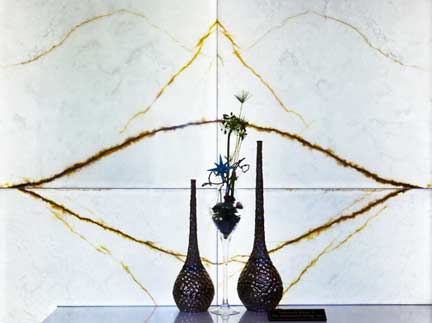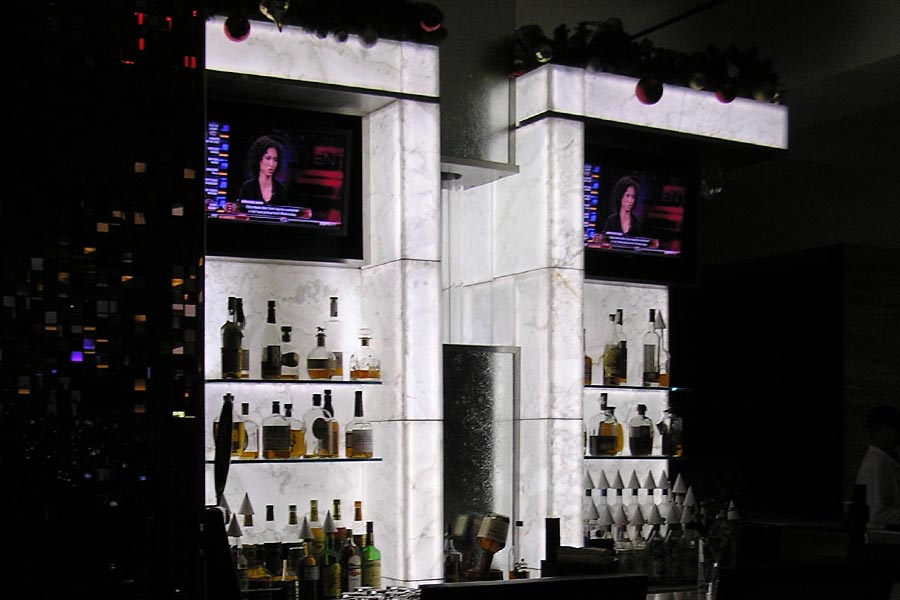5 Tips for Designing with Backlit Onyx Panels
Onyx itself is a luxurious material, and when integrated with the proper backlighting techniques the layers and depth of the stone is further brought to life. You’re investing money and design time into this natural product, so consider the following tips to properly showcase the natural beauty of onyx:
1. Choose an onyx stone variety that has significant visible veining or texture– the natural color and movement will distinguish the high-end natural stone finish from a man-made alternative.

(above image: Tower Oaks Backlit Honey Onyx Feature Wall by GPI Design)
2. White onyx is the least forgiving stone for backlighting applications. Backlit white onyx is prone to hot and cold spots, so allow more space between the stone and the lighting source or consider using diffusers, scrims, and filters.
3. When designing with standard dimensional onyx panels, ensure that the light source is bright enough to transfer through the stone surface.
4. When designing with glass-backed stone panels, ensure that the glass is non-leaded. Leaded glass casts a greenish tint and can alter the color of the onyx panel.
5. When designing a ceiling or wall layout of backlit onyx panels, consider the book matching composition and how the seams will interact with the natural veining of the stone. (Read our previous blog post on book matching natural stone for more details.)

(above image: Signature Place Backlit Onyx Lobby Feature Walls by GPI Design)
Designing with backlighting and natural onyx comes with its own set of limitations, so take time to mock-up the stone and light assemblies or choose a company with experience in integrating the two products.

